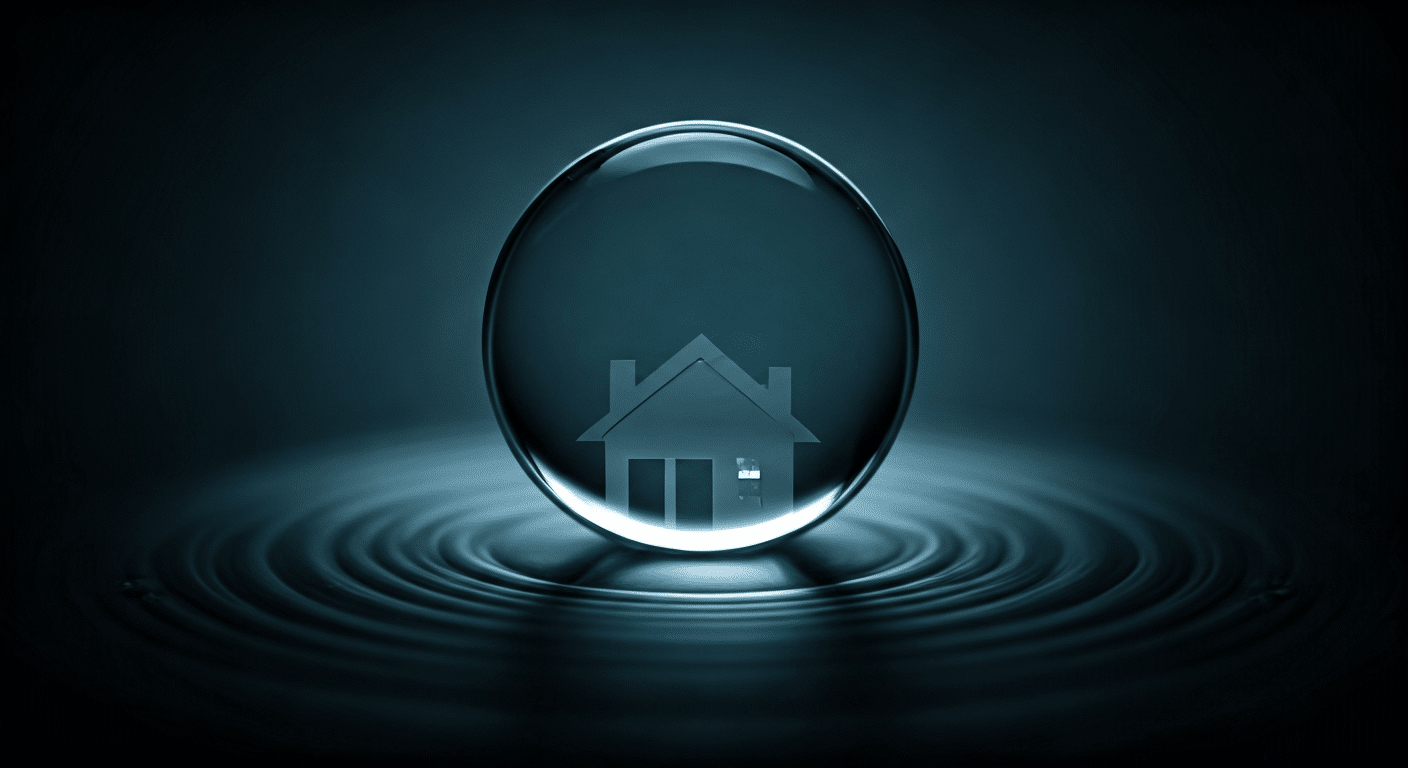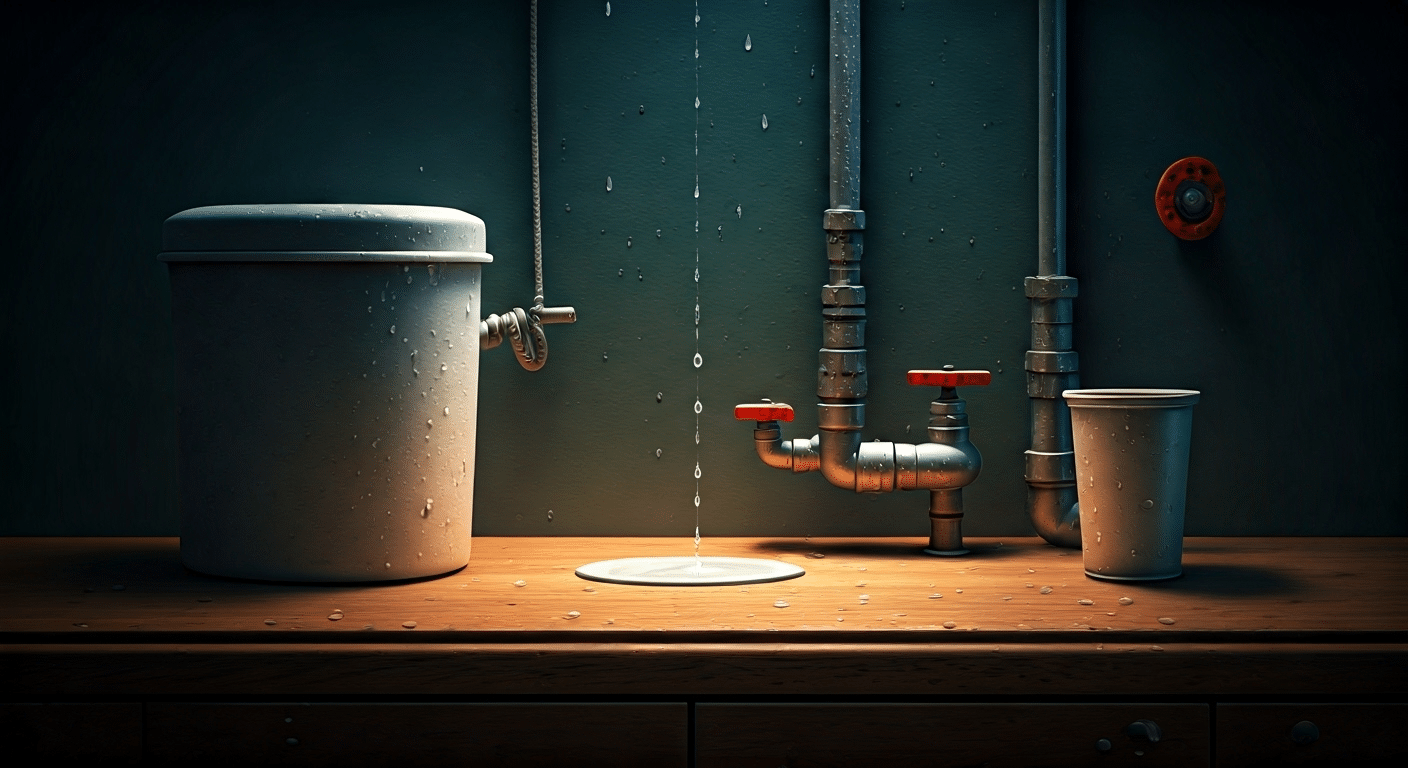
Key Highlights
- Detecting a water leak early can prevent costly household water damage and skyrocketing bills.
- Common signs of leaks include unexplained spikes in the water bill, wet spots, or mildew in unexpected areas.
- Plumbing fixtures like faucets and appliances such as dishwashers are frequent sources of household leaks.
- Monitoring your water meter and using techniques such as food coloring tests can assist in home leak detection.
- A professional plumber can repair water supply line leaks and restore your plumbing system effectively.
- Leaks waste thousands of gallons of water annually—prompt action ensures an efficient, damage-free household.
Introduction
A water leak in your home is not just a small problem. It can cause big trouble like water damage or mold if you do not fix it soon. The pipes and parts in a home’s plumbing system can be tricky. That is why leak detection can be hard. If you know the usual reasons and signs for a leak, you can help stop bigger problems. It does not matter if it is a faucet with drops or a break in a hidden pipe. If you know how to find and fix a leak right away, you can keep your home safe. You also help save water.
Common Sources of Residential Water Leaks

In many homes, water leaks can start in different places. The water often comes from plumbing fixtures, appliances, or broken water supply lines. There can be small drips or bigger leaks that can lead to damage. Knowing what can cause these leaks helps people stop them early.
Most types of leaks in the house happen as things get older. The pipes, seals, and connections in appliances and fixtures can wear out over time. Rust, old parts, or loose pieces can let water out. If you fix or get new parts, you can stop these leaks from getting worse or wasting more water. This simple step can save money and keep the water where it should be.
Plumbing Fixtures and Appliances
Faulty plumbing fixtures and old appliances are often the main reason for a leak at home. A leak can often start near the faucet. Worn-out valves or broken seals let water get out. If you do not fix even a slow faucet drip, you could lose hundreds of gallons of water every year. This will make your utility bills go up over time. Doing regular maintenance checks on these fixtures can help you save money by catching the leak early.
Dishwashers and washing machines are also common places for a leak to start. There can be a problem where the water supply hoses or other parts connect. You may see water pooling around your appliances that tell you something is wrong. Do a close check of these hoses often, and to be safe, replace them every five years. This step will help you avoid a leak or other trouble.
It is also good to check the seals and joins around sinks and drains. If there is a small leak here, it may not look bad. But it can make mildew and even hurt your drywall or cabinets over time. Fix these leak problems soon so you can keep your home in good shape.
Regular maintenance of your plumbing and all your appliances will help stop wasted gallons of water and other expensive damages.
Toilets and Bathroom Leaks
A toilet leak is a quiet problem, but it can really make your water bills higher each month. The leak often comes from the toilet tank. Worn gaskets or parts with corrosion inside let water get through all the time. When these break, water moves from the tank into the toilet bowl without stopping. This uses a lot of water. To check for a leak, you can use food coloring in the tank. If the color shows up in the toilet bowl, there is likely a leak.
Corrosion and cracked seals often start leaks in the bathroom. Things in your toilet’s assembly, like the wax ring or flush valve, can stop working over time. This can let water get out at the base or around the connections. Leaving these leaks alone can cause water damage to the floor under the toilet or even the ceiling below your bathroom.
Not just toilets, but your other bathroom fixtures, like showerheads and pipes, can also develop a leak. These water leaks might ruin walls, drywall, or tiles nearby. To keep your bathroom plumbing system working its best, check these things often.
Signs That Indicate a Water Leak in Your Home

Spotting a water leak early can help keep your home safe from big, costly problems. If you see that your water bill has gotten higher all of a sudden, it may mean there is a hidden leak. Check for wet spots that you cannot name or for stains that do not go away on walls and ceilings. These can show where trouble is starting.
Other warning signs are things like mildew popping up. This can grow well, especially if the space is damp, and the leak is not easy to see. Make sure to watch your water meter too. If the numbers go up when no water is being used, it may be a sign of a leak. Notice these things because it will help you keep your plumbing system in good shape.
Unexplained Water Bills and Meter Changes
A strange increase in your water bill can be the first clue that there is a water leak. Check what you are using now compared to your usual winter water usage and your past bills. If you see the line going up all the time, there might be some leaks that you don’t see. These can waste a lot of gallons of water.
The water meter at your house is a trusted way to help you with this leak detection. Turn off all the water-using fixtures like taps and showers inside your house first. Wait for a bit. If the meter still shows water flow even after hours, then that means there is a leak you need to find.
|
Table: Water Meter Test Results |
Leak Indication |
|---|---|
| Meter moves when all water is off | Fast-moving leak |
| Significant change after hours | Slow drip present |
Don’t wait if you see a leak from your meter reading. Taking quick action helps keep stray leaks from costing you a lot more in repairs, and it saves water too.
Damp Spots, Mold, and Mildew
Unusual wet spots on the floor or ceiling are a sign of water damage. You may see these wet areas in a corner or under a pipe that you don’t usually see. This shows there could be a leak. When you notice this, act fast so the water does not do more harm to your home.
If you see mold or mildew in places you do not expect, that is also something to watch for. Mold and mildew like to grow where it is warm and moist. You can find it behind drywall or under the floor when there are leaks. Do not forget about water stains. Brown or yellow stains mean water may have been there a long time.
If this is not fixed, more problems can spread because of the water, especially in materials like drywall. If you notice mold you can see or even a musty smell, it is very important to find where that moisture is coming from. This keeps your home in good shape and keeps you and your family safe.
Conclusion
In the end, taking care of a leak in your home right away is very important. It helps keep your house in good shape. You need to look for places where a leak can start and watch for signs, like your water bill going up for no reason or finding wet spots in your home. This will help you stop big problems before they start. Even a small leak can turn into a much bigger issue if you do not fix it soon. If you think there is a leak or you need help, it is a good idea to call a professional plumber. The plumber can look for the leak and fix it the right way. Do not wait. Give your home the care it needs and take action now.
Frequently Asked Questions
What should I do if I suspect a hidden water leak?
If you think there is a hidden water leak, start by using your water meter to check for any changes in how much water you use. Look for wet spots and mildew in your house. Some leaks are hard to see, so it is best to call a professional plumber. The plumber can inspect your water supply and help with accurate leak detection. This way, you know for sure if there is a leak and what you need to do next.
How can I check my water meter for leaks?
To check for a leak using your water meter, first make sure all water sources in your home are shut off. Watch the water meter and see if it moves, as this means there is a leak. You can also leave everything off and check back after a few hours. If the water flow or gallons used have gone up, it could mean there are household leaks.
Are water leaks covered by homeowners insurance?
Coverage for water leaks by homeowners insurance can be different for each case. Most of the time, if there is sudden or significant water damage, you might be covered. But if the water damage happens slowly over time or the leak is from certain types of leaks, you may not get help. It is a good idea to check your policy or talk with your insurance company to know what they cover about plumbing problems and water damage.
Can small leaks really cause major damage?
Yes, even small leaks can turn into big problems as time goes on. If you let it drip for a long time, you can lose thousands of gallons of water. The water may cause corrosion in pipes or metal parts. It can make drywall weak and sometimes make mold show up. If you fix small things early, you can stop big repair costs and stop more water damage.
When should I call a professional plumber for a leak?
You should call a professional plumber if you can’t find the source of the leak. You also need help if you think the trouble is in a hidden spot, like a water supply line. A plumber with skills in leak detection will know what to do. They can find leaks and fix problems in your plumbing system fast and in the right way.

